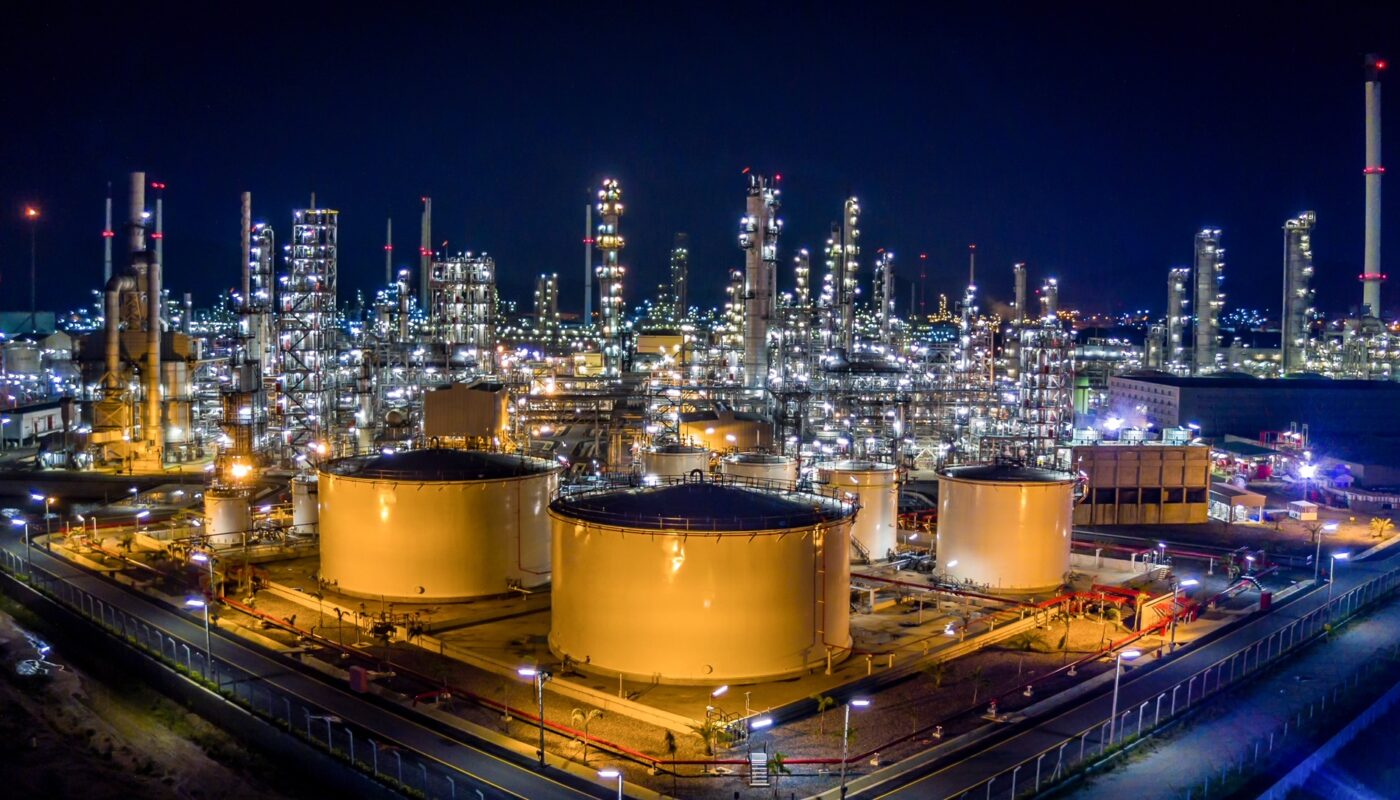Fluid Catalytic Cracking
Fluid catalytic cracking (FCC) is one of the most important conversion processes in a petroleum refinery. It is used to convert the high-boiling, high-molecular weight hydrocarbon fractions of petroleum crude oils into more valuable gasoline, olefin gases, and other products. This is done by cracking the molecules with the addition of a catalyst.
FCC units use a circulating fluidized bed of zeolite-based catalyst to crack large hydrocarbon molecules into smaller, more useful ones. Around 200-300°C, the catalyst acts as a solid acid to catalyze cracking reactions. Larger molecules like gas oil are contacted with hot catalyst particles in the reactor riser section. Here the molecules crack, producing lighter molecules as well as coke which deposits on the catalyst. The cracked molecules separate from the catalyst in the reactor.
The catalyst is then regenerated by burning off the coke in the regenerator unit using air at high temperature around 590-720°C. The regenerated catalyst is recirculated to the reactor to continue cracking reactions. Over time, the catalyst deactivates due to loss of activity from deposited carbon and needs to be replaced to maintain conversion levels. A single FCC unit can process from 70,000 to 150,000 barrels of feed per day.
Alkylation
Another important refinery process is alkylation, which is used to combine isobutane with butylene to produce alkylate – a high-octane component of gasoline. Alkylation involves acid catalysis using either hydrofluoric acid or solid acid zeolite catalysts like H-ZSM-5.
Hydrofluoric acid (HF) alkylation has been the dominant technology since the 1950s due to its high activity and ability to produce high-octane alkylate product directly. However, HF is toxic and corrosive, requiring specialized equipment and substantial investment in safety systems. As a result, many refiners are shifting to solid acid catalyst (SAC) technology which uses zeolite catalyst pills.
SAC units offer significant safety benefits over HF as zeolite catalysts are non-toxic. They also have lower capital and operating costs. The catalyst requires periodic replacement but yields a cleaner burning product. Alkylation plays an important role in providing high-octane components for clean gasoline blends.
Reforming Catalysts
Reforming or octane enhancement is another major conversion process that increases the octane rating of naphthas or straight-run gasoline. It does this through catalyst-mediated chemical reactions like dehydrogenation, dehydrocyclization and isomerization.
Platinum catalysts dispersed on chlorided alumina carriers are primarily used for reforming. They promote the cracking of rings and removal of hydrogen from molecules to form high-octane aromatics. The catalysts are regenerated continuously to remove coke deposits. Periodically, platinum leaving the support requires replacement of the reforming catalyst.
Multiple heatings and contacts with hot catalyst particles allows the reactions to proceed. Reforming significantly increases the research octane numbers (RON) of feedstock. This allows the production of higher-octane gasoline grades with lower aromatics content, meeting environmental regulations. Reforming is a mainstay process for refiners aiming to maximize Spark Ignition (SI) engine fuel volumes and quality.
Hydroprocessing Catalysts
Hydroprocessing involves the use of hydrogen with Refinery Catalyst for the removal of pollutants from petroleum feedstocks to produce cleaner fuels and products. Important hydroprocessing units include hydrotreaters, hydrocrackers and hydrodesulfurization (HDS) units.
Hydrotreaters use cobalt-molybdenum or nickel-molybdenum catalysts supported on alumina to catalytically hydrogenate and desulfurize distillate fuels. This process removes impurities like sulfur, nitrogen and aromatics which are harmful automobile emissions. The sulfur needs to be reduced to meet stringent environmental regulations around the world.
Similarly, HDS units are designed specifically to ultra-deep desulfurize fuels to single digit ppm sulfur or lower levels. Precious metal catalysts like nickel-molybdenum or various formulations with cobalt-molybdenum are used. The catalyst sulfur capacity diminishes over time requiring periodic replacement to maintain removal efficiency.
Hydrocrackers and residue hydrotreating use more robust multi-metallic catalyst formulations to crack and desulfurize heavier residual oil feedstock under severe conditions. This produces lighter, lower-sulfur products.
Catalyst Advancements
Constant evolution of catalyst formulations helps refiners maximize asset utilization and meet ever-stricter environmental standards. Development of tailored new catalysts can also open up opportunities like processing heavier or more difficult feeds.
Some areas researchers are working on include:
1) Higher activity, longer life catalysts to improve run lengths and reduce replacement costs
2) Developing multi-functional catalysts
3) Greener, non-toxic catalyst formulations
4) Nanoparticle catalyst designs for superior performance
5) Use of artificial intelligence for accelerated catalyst discovery and design optimization
These advancements will be crucial for the industry to adapt to disruptions like the energy transition and ensure viability of refining operations in the future. Catalyst innovations will play an important supporting role as refiners produce more specialized products from a variety of crude feedstocks.
*Note:
1. Source: Coherent Market Insights, Public sources, Desk research
2. We have leveraged AI tools to mine information and compile it



